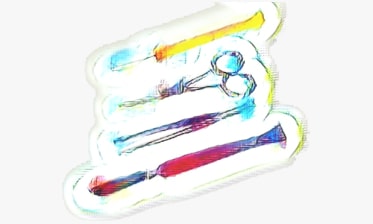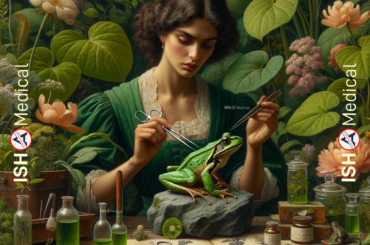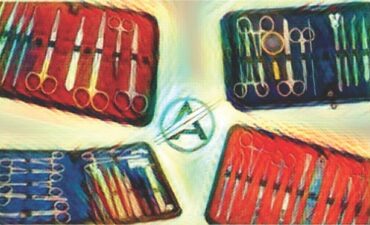A
Do you know about Dissection Tools?
Dissection tools are specialized instruments designed to dissect biological specimens, such as plants, animals, or organs, with precision and accuracy. Also, these tools are crafted to provide scientists, students, and researchers with the means to carefully cut, separate, and examine the internal structures of organisms without causing damage. In the same way, properly using these tools is vital to ensure that the integrity of the specimen is maintained, enabling a comprehensive study of its anatomy.
Intended Use
The intended use of dissection tools is to facilitate the process of dissecting biological specimens, such as animals, plants, or organs, for various purposes. Here are the primary intended uses that you should know:
Anatomy and Biology Education:
- Classroom Instruction: Dissection tools are commonly used in educational settings, such as schools and universities, to teach students about the anatomy and biology of living organisms.
- Hands-On Learning: They provide students with hands-on experience, allowing them to explore and understand the internal structures of organisms. In the same way, this practical experience enhances their understanding of biology.
Scientific Research:
- Biological Studies: Researchers use dissection tools to study the anatomy and physiology of different organisms. Also, this includes examining the structure and function of organs, tissues, and other biological components.
- Advancements in Knowledge: Dissection tools are essential for making scientific discoveries and advancements in zoology, botany, entomology, and comparative anatomy.
Medical Training:
- Anatomy Studies: Medical students and professionals use dissection tools to learn about the human body’s intricate anatomy. Also, this hands-on experience is crucial for medical education.
- Surgical Training: Surgical residents and aspiring surgeons practice dissection techniques on cadavers to develop the skills necessary for surgery, including delicate procedures.
Veterinary Medicine:
- Animal Anatomy: Veterinarians and veterinary students use dissection tools to study the anatomy of animals, ranging from small pets to large livestock.
- Diagnosis and Surgery: Understanding the anatomy of different species is essential for diagnosing medical conditions in animals and performing surgical procedures.
Scientific Documentation:
- Specimen Examination: Dissection tools allow scientists to examine and document the features of specimens carefully. This is important for recording data and observations.
- Publication and Presentation: Researchers use dissected specimens and the information obtained from them in scientific publications, presentations, and research papers.
Forensic Science:
- Crime Scene Investigation: Forensic scientists may use dissection tools to examine human remains and gather evidence during criminal investigations.
- Identification: Accurate dissection and examination help identify the cause of death, estimate the time since death, and collect evidence for legal purposes.
Artistic and Museum Displays:
- Taxidermy and Model Making: Artists and taxidermists use dissection tools to create lifelike models and displays of animals and organisms for artistic, educational, or museum purposes.
Entomology and Insect Studies:
- Insect Dissection: Entomologists use dissection tools to study the anatomy and behavior of insects. Also, this is vital for understanding insect species, behavior, and ecological roles.
Botanical Studies:
- Plant Anatomy: Botanists and horticulturists use dissection tools to examine plant structures, such as roots, stems, leaves, and flowers, for research and classification purposes.
In summary, the intended use of dissection tools is to aid in the exploration, examination, and understanding of the internal and external structures of biological specimens. In the same way, you should know that these tools serve diverse fields, from education to scientific research, medicine, and beyond, contributing to our knowledge of the natural world and its intricate workings.
Types of Dissection Tools
Certainly! Dissecting tools come in various types, each designed for specific purposes during the dissection of biological specimens. Here’s your find to know a detailed breakdown of the types of dissecting tools commonly used:
Scalpel:
- Description: A scalpel is a small, sharp knife with a fine, pointed blade.
- Intended Use of Scalpel: Scalpels make precise incisions in tissues, organs, or specimens. They are essential for initial cuts and delicate dissection work.
- Variations: Scalpels come with various blade shapes and sizes, including straight blades for general cutting and curved blades for more specialized cuts.
Dissecting Scissors:
- Description: Dissecting scissors have sharp, pointed blades designed to cut tissues and organs.
- Intended use of dissection scissors: They cut through tissues cleanly and precisely. There are two primary variations:
- Straight-blade Scissors: These are used for general cutting tasks.
- Curved-blade Scissors: Curved scissors are especially helpful for cutting in tight spaces or around curved structures.
Forceps (Tweezers):
- Description: Forceps are small, tweezer-like instruments with two pointed tips.
- Intended Use dissection forceps: Forceps are used for grasping, holding, or manipulating small tissues, structures, or objects during dissection. They ensure a firm grip without causing damage.
- Variations: Forceps come in various shapes and sizes, including fine-tip forceps, serrated forceps, and locking forceps, each suited for specific tasks.
Probes:
- Description: Probes are slender, pointed tools with one or both ends tapered to a fine point.
- Intended use of dissection probes: Probes are used for a variety of tasks, including separating tissues, lifting structures, and exploring the internal anatomy of specimens. Also, they are gentle tools for detailed examination without causing damage.
Dissecting Pan:
- Description: A dissecting pan is a shallow, rectangular, or oval tray with raised edges.
- Intended use of dissecting pan: Dissecting pans are used to hold specimens during dissection. They prevent fluids and debris from spilling, ensuring a clean work surface.
- Variations: Some dissecting pans have a wax layer on the bottom. Which can be used to pin specimens in place securely.
Dissecting Pins:
- Description: Dissecting pins are small, slender pins with pointed ends.
- Intended use of dissection pins: These pins are used to secure specimens within the dissecting pan. Further, holding them in place during dissection. This ensures stability and ease of examination.
Needle Holder:
- Description: A needle holder is a clamp-like instrument with a hinged handle and locking mechanism.
- Intended Use of Dissection Needle Holders: Needle holders are used to grip and manipulate needles firmly during suturing. As well as when sewing tissues. While primarily used in surgical procedures, they may also have applications in certain advanced dissections.
Magnifying Glass or Loupe:
- Description: A magnifying glass or loupe is a handheld optical device that magnifies the view of small structures.
- Intended Use: It is used to examine fine details of specimens more closely.
These are some of the most common types of dissecting tools used in various scientific and educational settings. The choice of tools depends on the nature of the specimen being dissected. Also, the specific dissection techniques required for a given task.
Conclusion
Dissection tools are indispensable instruments for scientists, students, and researchers involved in studying biology and anatomy. They enable the careful examination of organisms and tissues, fostering a deeper understanding of their structure and function. By selecting the appropriate dissection tools and using them skillfully. Also, individuals can engage in meaningful scientific exploration and contribute to our collective knowledge of the natural world. Whether you’re a budding biologist or an experienced researcher, reliable dissection tools are essential for your scientific endeavors.
ISAHA Medical


